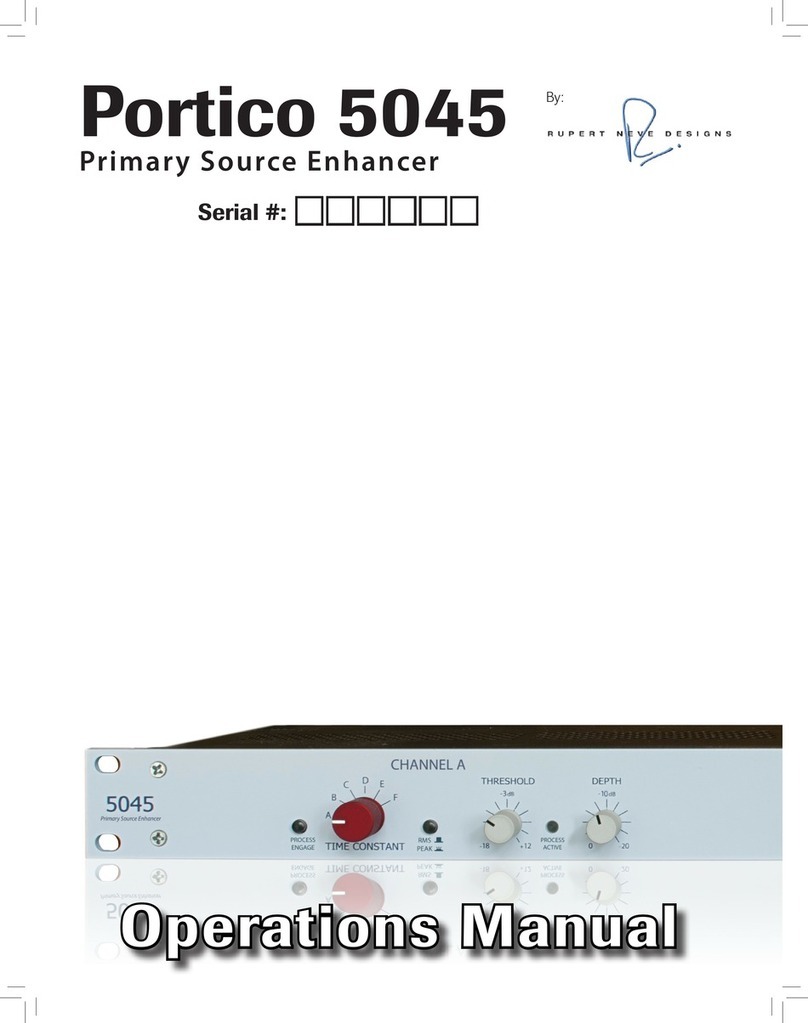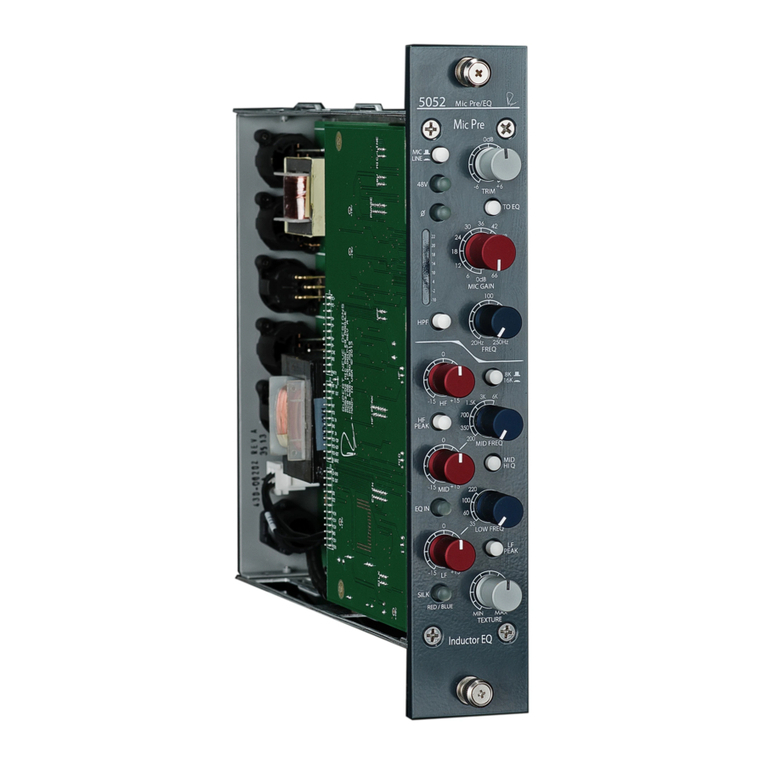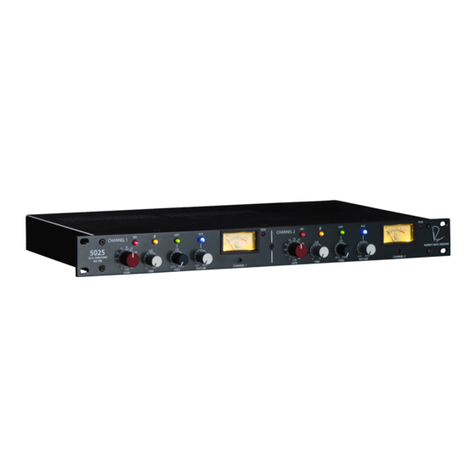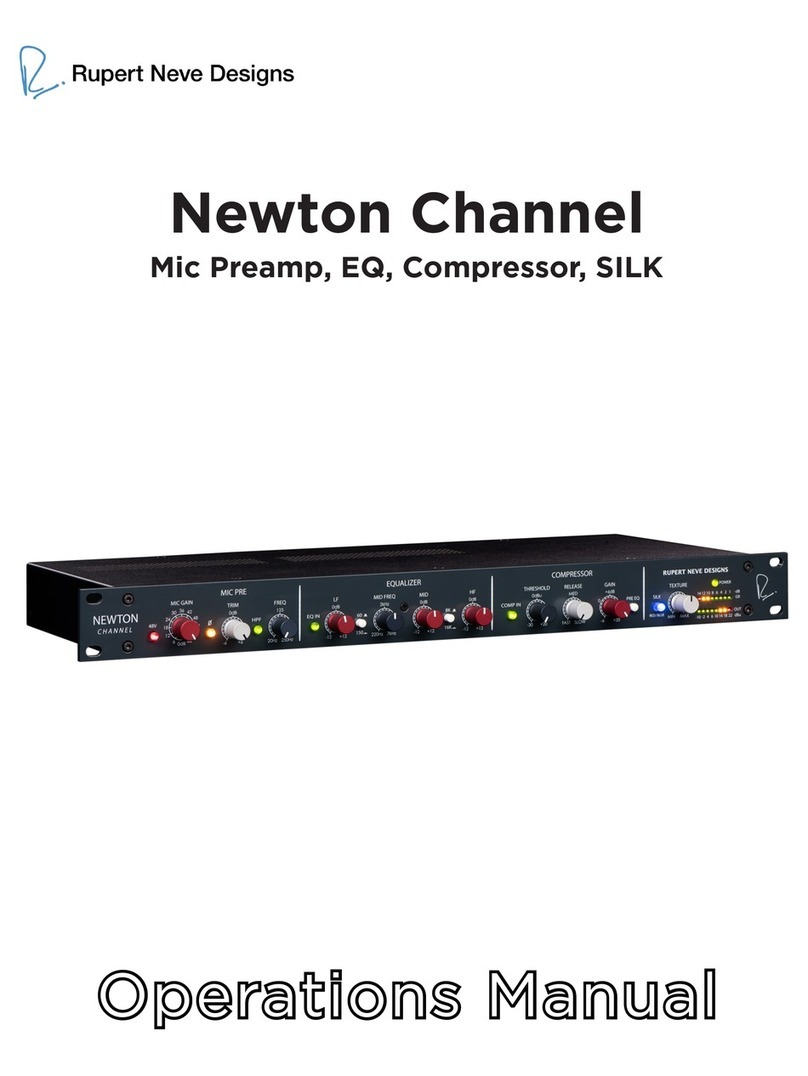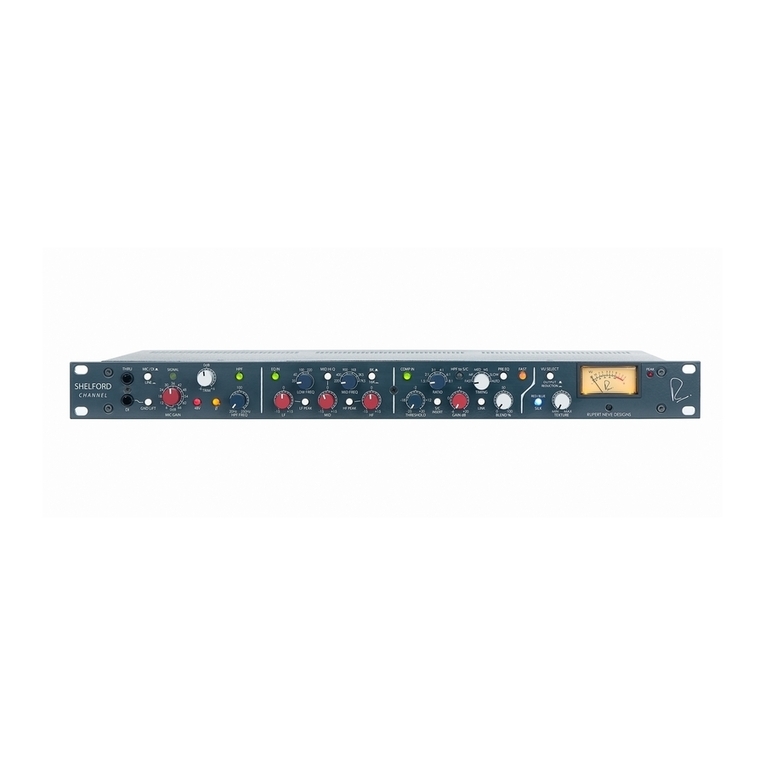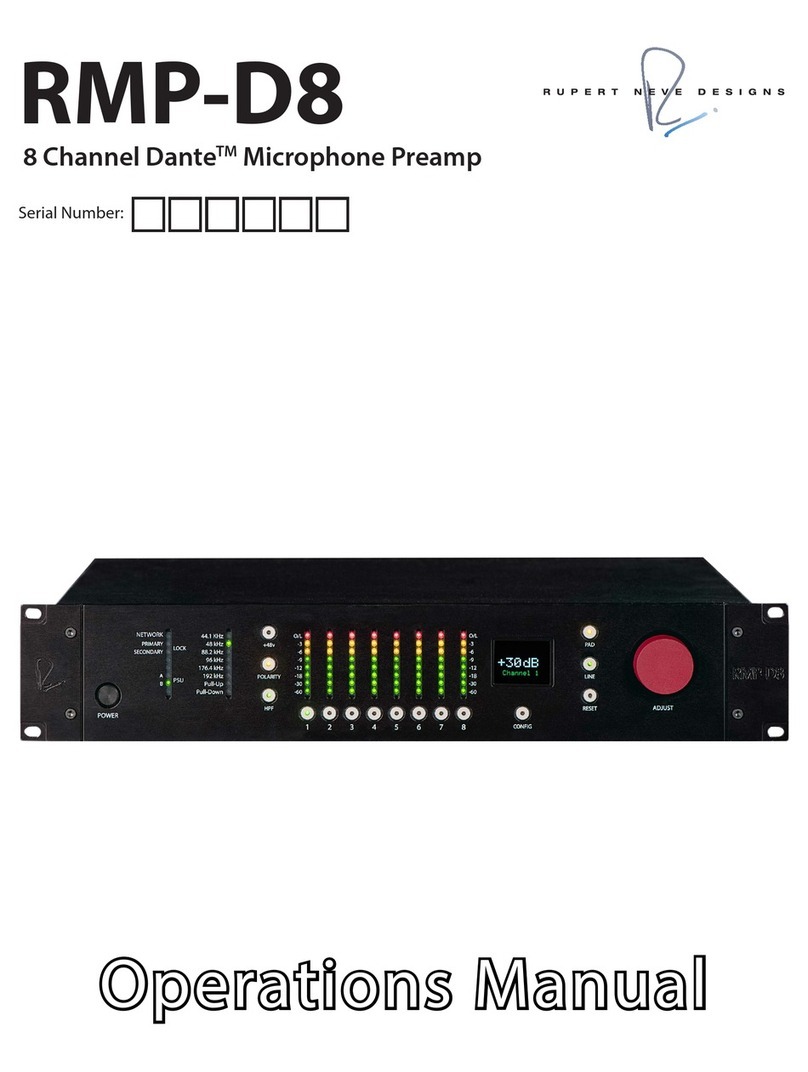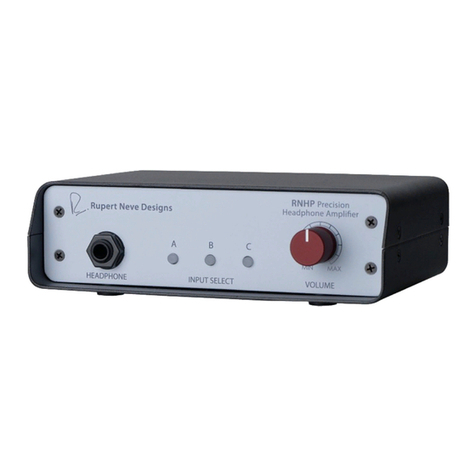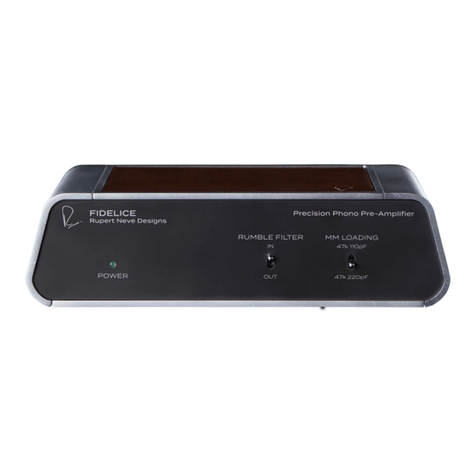5016 MIC PRE/DI
8
The D.I. and LINE channel of the Rupert Neve Designs Portico ™ 5016
The D.I. and Line Preamplifier Channel is completely separate from the Microphone Preamplifier
Channel housed in this Portico™ 5016 half rack 1U module.
The Channels may be used separately without interaction but the real power of the 5016 lies in the
Variable Phase feature incorporated into the D.I. Channel that enables a musical Instrument to be
phase-aligned with a voice signal from the microphone input on the Microphone Channel when the
microphone and D.I. signals are later mixed.
The D.I. and LINE channel.
The D.I. Input.
With a few notable exceptions, musical instrument pickups, need to work into a very high load
impedance. Great care is needed to ensure that the connecting cable and the method of connection
does not allow introduction of interference or hum. High quality connecting Plugs should be used
(and kept clean!). The cable should be a "low noise", "low capacitance" type and, preferably, not
more than about 20’ (6 Metres) long.
For these reasons the Portico™ 5016 D.I. is fitted with a T.R.S. (Tip-Ring-Sleeve) "Jack" input on
the front panel. The input circuit is a "T.L.A.", amplified transformer configured to provide a very
high input impedance; 3 Megohms, between the Tip and Ring legs and an even higher impedance
between each leg, (Tip or Ring) and Ground. In this way, although the source (the pickup) is not
usually balanced, many of the isolation and grounding benefits of a balanced input are obtained
from the Transformer together with the sweet musical character that stems from the elimination of
those extremely low level, out-of-band distortion and noise artifacts that cannot be heard but which
can intrude subliminally into equipment that is not so uniquely protected.
Either a T.R.S. (Tip-Ring-Sleeve) or a Single Pole "Plug" may be used, depending on the pickup.
(see wiring diagram)
For historical reasons unbalanced connections have become the norm with musical instrument
pickups. Combining very high impedance with the unbalanced circuit topology constitutes a
considerable challenge to the designer who has to ensure the highest possible music signal quality
under all conditions.
The Line Input
Keyboards, Synthesizers and some low impedance Instrument Pickups generally require a much
lower load impedance. However they are often unbalanced and need less gain. Similar care is
needed to ensure that the connecting cable and the method of connection does not allow
introduction of interference or hum.
The Line Input is on the back panel, with direct connection to the balanced and floating input
transformer - no T.L.A. being necessary - the full advantage of the Portico™ Line input
Transformer is here used to the full, connection being made via a professional XLRF connector.
The Line Input should be used in balanced configuration when possible.

